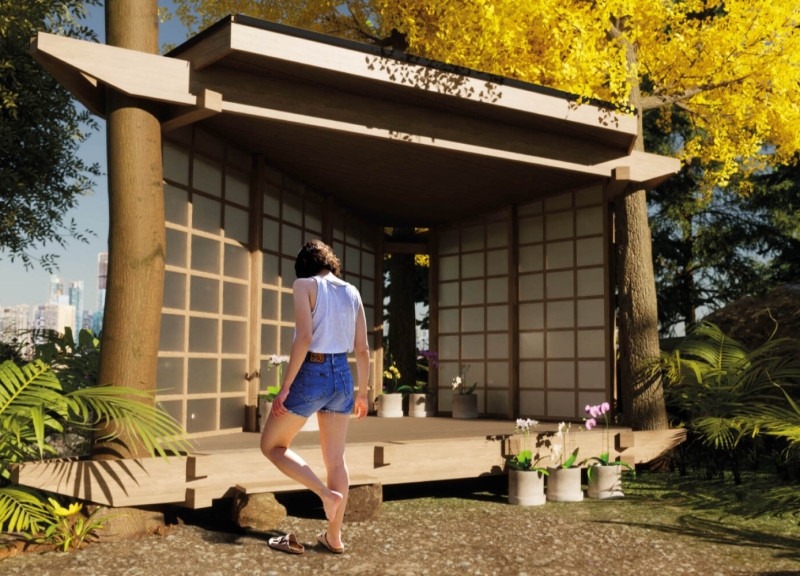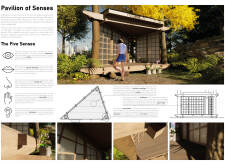5 key facts about this project
The Pavilion of Senses is located within a lush natural environment and is designed as a space for meditation and reflection. Its purpose is to foster mindfulness through the active engagement of the five human senses: sight, taste, smell, touch, and hearing. The design encourages visitors to connect deeply with themselves and the surrounding landscape.
Concept and Spatial Layout
Openness is a key feature of the pavilion, allowing light to enter freely and creating a connection to the outside world. The layout includes transparent elements that invite nature inside, offering views of the landscape while providing shelter. This combination makes the pavilion feel like a part of the environment rather than separate from it.
Sensory Engagement
Textured acrylic sheets are a prominent feature used throughout the pavilion to enhance visual experiences. They scatter natural light and create intriguing patterns on the surfaces. In addition to visual stimulation, edible plants in terracotta pots play a role in engaging taste. These plants not only contribute to the aesthetic but also evoke feelings of joy and care.
Acoustic and Tactile Elements
Sound and touch are essential to the overall experience in the pavilion. Natural sound, like birds chirping and leaves rustling, fills the space, contributing to a calm atmosphere suitable for meditation. The layout is intentionally open, allowing visitors to physically interact with materials from nature, such as tree bark and gravel, fostering a closer connection to their surroundings.
Structural Considerations
The pavilion takes cues from traditional Japanese building methods, focusing on flexibility and stability. Movement in the supports is made possible through non-fixed connections, adapting to the environment. This approach ensures a sturdy structure while making the design responsive to the natural world.
The pavilion's walls, made with semi-transparent materials, allow light to filter through while providing privacy. This design choice balances the need for enclosure with a visual connection to nature, creating an inviting space for reflection and meditation.



















































